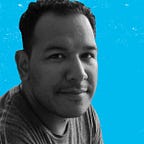Heuristics meets accessibility
A template for equitable design in UX research.
Recently I’ve been busy providing UX consulting for a handful of startups who I connected within a recent fellowship run by Cleo Capital. Generally, my first meetings with founders are meant for unpacking the problem they’re solving, getting to know their target customer, and understanding the industry they are entering.
Understandably, initial meetings end with a vision of an MVP in mind. Follow-up meetings are scheduled to list out high complexity vs. low complexity features as a team, as well as features assumed to be valued by the user (whom we haven’t even met yet). Founders are motivated to build fast because they need a hi-fidelity prototype in place to pitch to investors and throw on their landing pages to show that work is being done.
Compromises come next.
If I’m tasked to build a hi-fidelity prototype with only market research to work with, then I need to start asking some good questions.
- Which user tasks would investors most want to see? Why?
- How might user research inform the look and feel of the prototype?
- Which existing platforms do you currently use and admire? Why?
I’ve noticed the last question in particular shifts founders’ thinking into creative possibilities that are founded on UX research. What comes next is a list provided by founders of several apps and platforms that they wish to emulate, as well as a handful of competitor sites that illustrate a familiar structure to build off of.
I’ll typically conduct a heuristics evaluation on the founder’s site (if they already have one), a competitor or two, and one of their favorite platforms. I’m oversimplifying this, but founders love being shown sheets with numbers they can see change in, or numbers that validate their product decisions.
What I’ve noticed though, is that this early on in the research stage is an opportunity to embed accessible design practices and mindsets geared toward inclusivity. As I rated and scored a founder’s website and compared the scores to the ones they admired, they saw the value of UX research and I noticed that the method I used, Jakob Neilson’s 10 best UI practices, paralleled and complemented best practices of accessible design. The founders wanted to make the necessary changes and the fixes became high priorities for being included in their MVPs.
I thought: What if I included evaluating inclusive practices in my heuristic evaluations? What if this was an entry point to show them the myriad of users who could or could not access their platform?
So I created this template. It’s basically a heuristics evaluation and an accessibility evaluation sheet to rate websites. For simplicity, they both follow the same rules for grading.
It’s a work in progress.
I’m already thinking that I’d like to see how this could be adapted beyond websites. Or how the sheets could be separated by devices like mobile, tablet, desktop, watch, etc. I also created this separate sheet here that solely focuses on accessibility evaluations.
Circling back to the why. The goal of conducting heuristic evaluations is to explain usability problems and identify quick fixes. Using the 10 principles in a 2–4 hour heuristics evaluation can save companies up to 6 digits in revenue. Startup founders see the value in this practice, as they want to avoid costly design mistakes — especially in the beginning.
The principles of accessible design act in the same way; evaluating them early on and advising founders on how to include best practices of accessible design is essential for building healthy startups.
I hope these thoughts and practices can be used in designing for accessibility and inclusivity for your next design sprints. Let me know how it goes!
David is a Product Designer at City of Wind Design, a design studio that specializes in serving startups through UX design & software development with a bias toward accessibility & sustainability. To learn more about David Pinedo visit: https://www.davidpinedo.com or follow @davidpinedo24 on Twitter.
